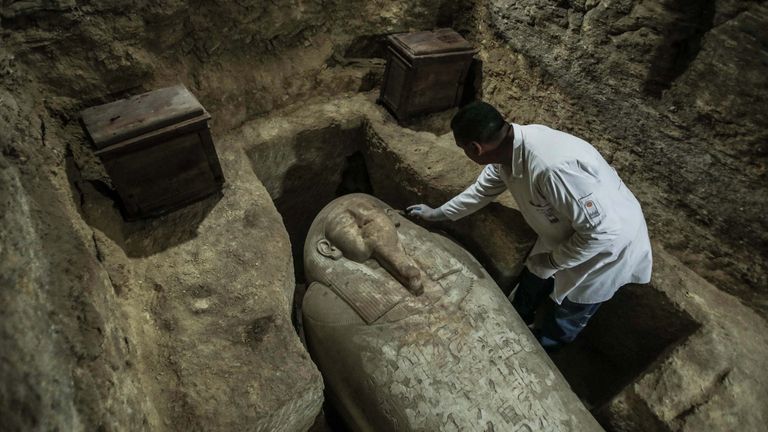Recent Discoveries That Are Casting Ancient Egypt In A New Light
From timeless tales in classic literature to some of Hollywood’s most well-loved blockbusters, our fascination with Ancient Egypt runs deep. But hold on to your chariots! Recent groundbreaking discoveries have begun to reshape so much of what we thought we knew about this fascinating civilization. Fresh archaeological approaches and new technology have totally revolutionized the field of Egyptology. And that means we’re beginning to unearth unexpected truths and rewriting history as we previously knew it. Let’s take a look at some of the most consequential finds of recent times.
1. Lion cub, crocodile, and cat mummies
Towards the end of 2019 Egypt’s Ministry of Tourism and Antiquities revealed the most remarkable collection of items to the public for the first time. Inside the Saqqara necropolis, which is located fairly close to the Giza pyramids, archaeologists had discovered a haul of mummies. But these were no ordinary human bodies: they were animals.
Mummified cats, crocodiles, lion cubs — they were all on show for the first time! It was an incredible collection, one that antiquities minister Khaled al-Anani called “a [whole] museum by itself” — and you can see why.
Obsessed with cats
The lion cub mummies were especially notable: such discoveries are exceedingly rare. The mummified remains of domestic cats are a relatively common thing to find in Egypt, but lions are a different story altogether. They were definitely the stand-out artifacts of the collection.
If nothing else, so many of these items illustrate just how obsessed Ancient Egyptians were with cats of all types. Elsewhere in the collection were some statues of Sekhmet, a female deity associated with war who was depicted with a human’s body and the head of a lioness.
2. The cemetery of the pyramid-builders
In 2019 the discovery of an Old Kingdom-era cemetery complex in Giza was announced by Egyptian officials. Often when ancient tombs and remains make the news, it’s because they belonged to the Kings and Queens of Ancient Egyptian society. But that’s not quite the case here.
The people who were laid to rest down here were those responsible for constructing the pyramids. There were normal workers buried on this site, plus two high-ranking people named Behnui-Ka and Nwi.
Not constructed by slaves
Dr. Zahi Hawass, who also served two stints as Egypt’s antiquities minister, delivered a statement in the wake of the discovery’s announcement. Commenting on the significance of the find, he said, “The discovery of the pyramid-builders’ cemetery reveals to the whole world that the pyramids were not built by slaves, but its builders had built their tombs beside their Kings.”
The belief that the pyramids were constructed by slaves is a long-held one, but the archaeological evidence is increasingly revealing that presumption to be false. The discovery of a dedicated cemetery for these builders provides further evidence to the contrary.

